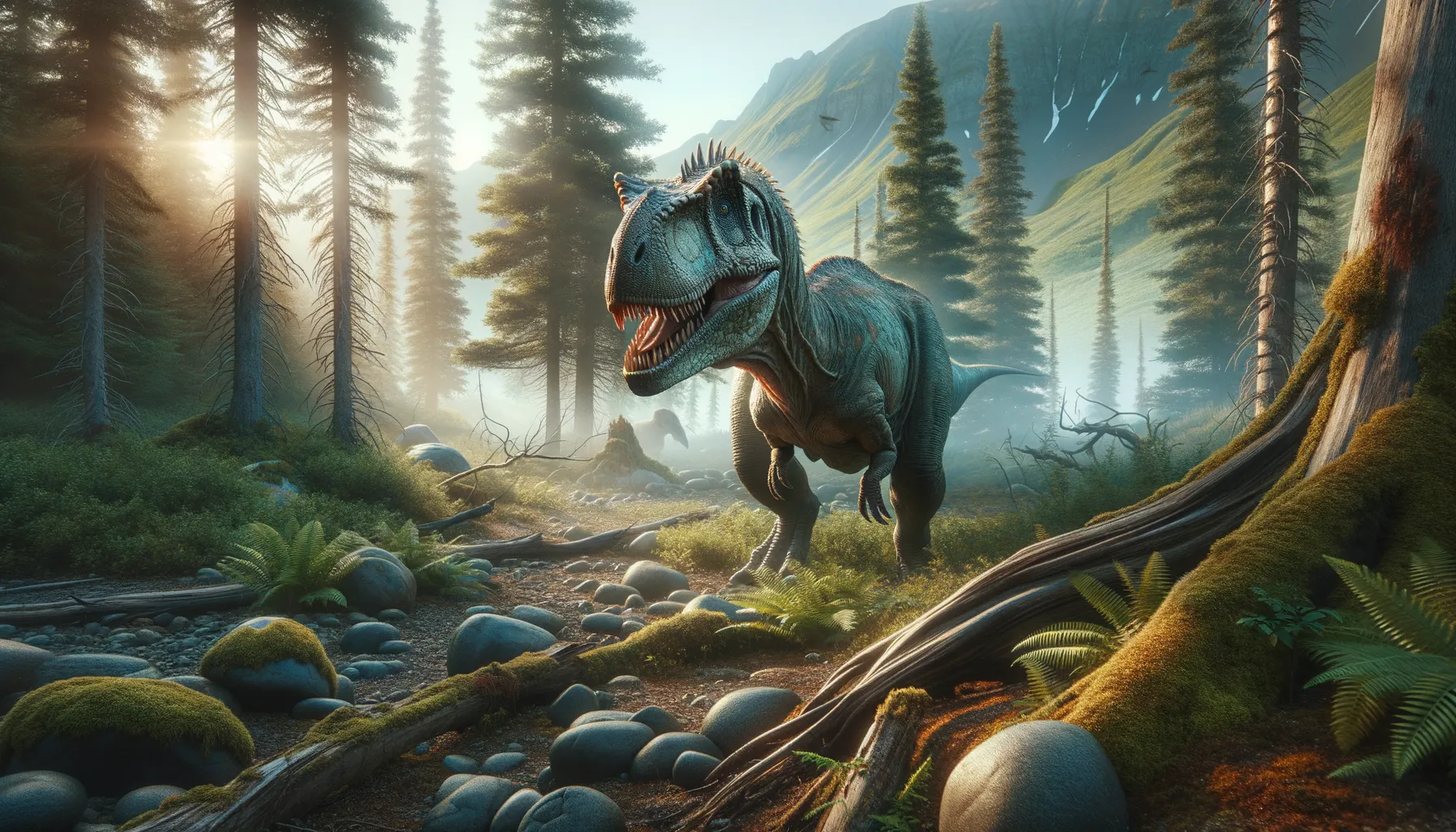
Alaskacephale
Headstrong survivor of the Cretaceous Arctic!
Period
Cretaceous
Length
Roughly 4 meters in length.
Height
Around 1.5 meters tall.
Weight
Approximately 400 to 500 kg.
Alaskacephale was a small, dome-headed dinosaur known for its distinctive thick skull. Living during the Cretaceous period, it roamed the regions that are now known as Alaska. This dinosaur was an herbivore, and its unique skull structure suggests it may have used head-butting as a form of defense or for social interactions. With its adapted features, Alaskacephale provides insights into the diverse paleo-environmental adaptations of the time.
Diet
Alaskacephale was an herbivore, feeding primarily on the lush vegetation of the Cretaceous period. Its diet likely consisted of ferns, cycads, and other low-lying plants.
Hunting
As an herbivore, Alaskacephale did not hunt for prey. Instead, it foraged for vegetation, using its robust teeth to process its plant-based diet.
Environmental challenges
During the Cretaceous, Alaska experienced significant shifts in climate, with fluctuating temperatures and periods of darkness. Alaskacephale had to adapt to survive in these changing conditions, relying on its physical traits and social structures. Predators of the time may have also posed a threat, requiring Alaskacephale to develop defense mechanisms.
Speed
Relatively slow-moving, primarily adapted for defense.
Lifespan
Estimated to be around 20 to 30 years.
First discovery
First discovered from fossils in Alaska in 1989.
Fun Facts
- Alaskacephale was a small dinosaur known for its thick, dome-shaped skull.
- It lived during the Late Cretaceous period, over 70 million years ago, in what is now Alaska.
- The name 'Alaskacephale' means 'Alaskan head,' referring to its remarkable skull structure.
- Alaskacephale was a herbivore, likely feeding on low-lying plants and vegetation.
- It belonged to a group of dinosaurs called pachycephalosaurs, which were known for their thick skulls.
- Fossils of Alaskacephale are rare, making each discovery especially exciting for paleontologists.
- Some scientists believe that the thick skull of Alaskacephale may have been used for head-butting during mating displays or territorial disputes.
Growth and Development
Alaskacephale likely experienced steady growth, reaching maturity over several years. Its distinctive dome-shaped skull developed as it aged, providing structural defenses against predators and rivals. Juveniles would grow under the protection of herd dynamics, learning survival skills through social interactions.
Habitat
This dinosaur inhabited forested and semi-open areas of ancient Alaska. Its environment was abundant with plant life, providing ample food sources. Seasonal variations in climate required adaptability to cold and extended periods of darkness.
Interaction with other species
Alaskacephale likely shared its habitat with a variety of other herbivores and predators. As a result, it developed defensive behaviors to protect itself from carnivorous dinosaurs. Social interactions with other herbivores could have been cooperative, offering safety in numbers against threats.
Natural lifespan
Alaskacephale would naturally live up to 30 years.
Reproduction
Alaskacephale likely laid eggs, as was common among dinosaurs of its group. Nesting behaviors would have included choosing protected areas and possibly caring for the young. Social structures in their groups might have provided some level of communal care for hatchlings.
Social behaviour
Alaskacephale may have lived in small herds, offering mutual protection and social interaction. Its domed skull could have played a role in social dominance displays and competitions. Herd living would have also facilitated learning and communication among individuals.
Fossil locations
Fossils of Alaskacephale have been predominantly found in Alaska, specifically in areas that were once temperate to polar environments during the Cretaceous. These discoveries have provided insights into the dinosaur's adaptations to a unique ecological niche. The fossil sites offer a window into the ancient ecosystems where Alaskacephale thrived.
